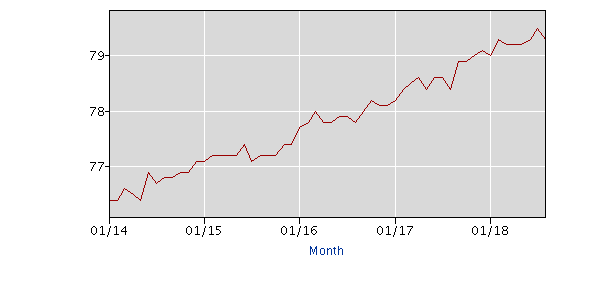September 08, 2018
In an NYT piece assessing the state of the labor market after Friday jobs report, Neil Irwin notes that the employment rate for prime age workers (ages 25 to 54) stood at 79.3 percent in August. That is the same as the 79.3 percent rate in February, indicating that there had been no increase over a six-month period.
However, this may be less compelling as an argument that the labor force is hitting its limits than it initially seems. In August of 2017, the employment rate (EPOP) for prime-age workers stood at 78.4 percent, which also turns out to be the same rate as in February of 2017. In August of 2016, it stood at 77.8 percent, which was also its level in February of 2016. And, in August of 2015, it stood at 77.2 percent. The EPOP for prime-age workers in February of 2015 was also 77.2 percent.
Here’s the picture for the last four years.
Prime Age Employment to Population Ratio

Source: Bureau of Labor Statistics
The data are seasonally adjusted, so the fact that EPOPs have a habit of being the same in August as February can’t be blamed on seasonal factors. It is simply a weird coincidence. But, this should be a warning against putting much stock in the view that the economy is hitting its limits based on the August employment data.
As the good book says, the household data are highly erratic. When you see a weird movement in one month’s data, it is most likely a fluke. You should want to see two or three months before believing it is actually telling us something about the world.







Comments